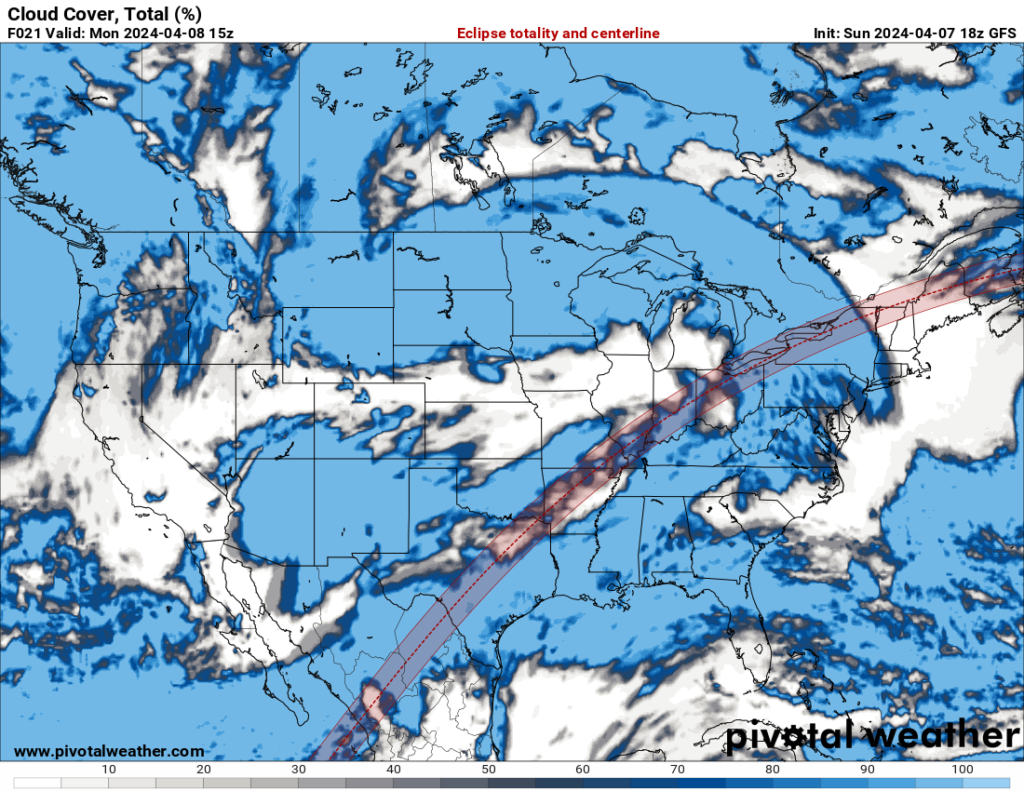
One thing that we know for sure about next week, is that for a long track of the eastern US, the moon will obfuscate the sun in the mid-afternoon. The eclipse is happening, and we’ve long known where the eclipse was happening.
Every forecast you see usually comes with a couple of words spared for the level of overcast on a given day. There is almost no brainpower expended on this process for most meteorologists that I know. Essentially, my go to method is to determine flow if you are near the sea, and proximity to an area of inclement weather. It works out well enough, and is frankly not something that many people follow up on.
So with that in mind, just know that I and most other weather people are flexing a muscle that we don’t often exercise when discussing the potential visibility of the celestial event of the year. I can state with some more knowledge that there will be an area of low pressure over the Upper Midwest that is quite occluded. At the time of the eclipse, the secondary low will be over the eastern Great Lakes, and the boundary will be along a line roughly from Pittsburgh to Houston.
Along that line, in particular, expect some clouds, and it will probably be a little dicey south of that boundary with moisture spilling into the region. The low over the Great Lakes, as well, will likely be more cloudy than not. Of course, this coincides with the axis of greatest coverage for the eclipse, which is a bummer for something so anticipated.
If you travel to Texas for the eclipse, you can still see some natural phenomenon in the evening. The next round of unstable weather will touch off some severe storms in west Texas, targeting the Wichita Falls area on Monday evening, with tornadoes a concern, along with large hail. I can confirm that these thunderstorms will completely obscure the sun.
